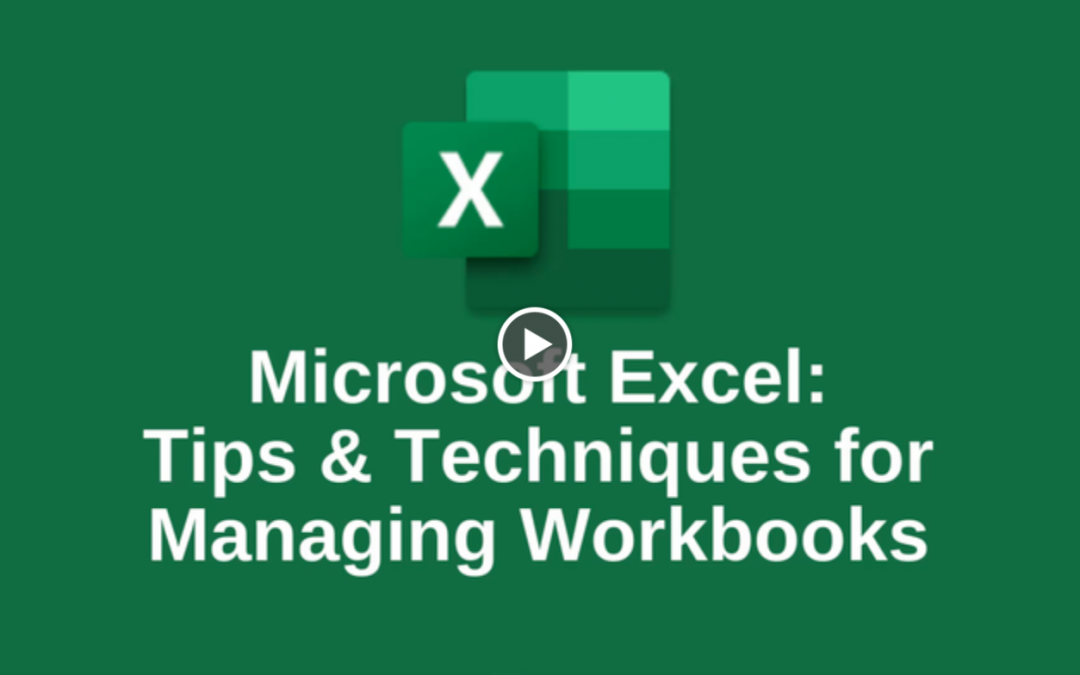
by Felicien | Jul 25, 2019 | Education
Create Your Own Fonts In Windows 10
You may have been using Windows 10 for some time now, but it’s likely that you haven’t mastered all of its features just yet.
Did you know that you can create your own fonts?
In the Windows store, you can get the “Make Your Own Font” app, a great way to add a personal touch to anything you may need to write. For example, you could even send an email in your own handwriting!
All you need to do is fill out the alphabet letter by letter (lower and upper case) as well as numbers and symbols. Then you name it, save it, and upload it via Control Panel > Fonts.
The next time you’re drafting something and find that Times New Roman is too formal, you’ll be able to switch to your personalized font instead.
Let us know what you think about this Windows 10 tech tip. Just reply to this email. Over the next few weeks, we’ll have more Windows 10 tips for you.

by Felicien | Jul 25, 2019 | Education
The top concern for CEOs today isn’t competitors or a recession — it’s cybersecurity. See why this is becoming the biggest challenge for an organization’s top executive.
Why Today’s CEOs are Worried About Cybersecurity
A business’s top executive has plenty on their minds: the potential of a major recession, competitors nipping at their heels and a shortage of talent. However, none of these hot topics are the top concern for US CEOs in 2019 — that banner falls to cybersecurity. When there are so many other issues facing organizations, why is cybersecurity the highest business concern for CEOs? Perhaps part of the issue is the continual cycle of mainstream media coverage of the massive breaches such as Equifax in 2017 that affected millions of individuals and can cost billions of dollars to resolve. It could also be the high-profile challenges that Facebook, Yahoo, Under Armour and Marriott have been facing over the past few years. A recent poll of over 1,400 CEOs and senior executives by The Conference Boardpoints to some of the reasons cybersecurity is a top strategic consideration for CEOs in 2019.
CEOs Struggling to Find the Right Cybersecurity Leaders
One of the key threats facing today’s CEOs is the ability to adequately resource their cybersecurity teams. This relatively new need is one that is causing a significant shortage in the hiring market, with organizations wrestling with budget requirements for an increasingly-expensive skill set. Unfortunately, the dearth of talent is not just at the executive leadership level, it is also causing IT departments around the country and the world to flounder as they attempt to staff up to meet the growing needs of cybersecurity as well as data compliance requirements. These individuals will be in high demand for the foreseeable future as gaining knowledge about cybersecurity requires time and investment in education. Savvy CEOs and other technology leaders have been growing these skills internally for the last several years, but having a split focus between cybersecurity requirements and their “day job” can quickly cause individuals to fall behind in the ever-changing security landscape.
Keeping Cybersecurity Initiatives in the Limelight
It’s relatively easy for CEOs to keep shorter-term strategies top-of-mind for their executive teams, but there are no quick solutions to enhancing your organization’s cybersecurity. This requires a long-term, focused effort — and resisting the siren songs of short-term gains to ensure that your strategic focus on IT security stays in place. Changes in the economy or in the competitive marketplace may tease CEOs to redirect some of the funds or teams to other parts of the organization, but it’s crucial that top executives stay in tune with the benefits that cybersecurity provides to the organization. In many cases, the changes that need to be made to make your organization more secure will also have payoffs in the efficiency of your operations, too.
Marketplace Perception of a Data Breach
The extremely negative perception and sheer quantity of negative publicity that can come with a data breach are reason enough for CEOs to be overly concerned about the cybersecurity within their organization. It doesn’t take long for smaller, leaner competitors to enter many marketplaces, and these organizations can receive positive publicity if larger organizations are caught up in a breach situation. How the business handles their communication around a massive breach, ransomware or other cybersecurity incidents can be as damaging as the incident itself if the CEO isn’t careful. These situations require a great deal of proactive communication and notification to customers along with the major effort required to evaluate the incident and begin remediation. Without a comprehensive incident response plan in place, the situation becomes that much more difficult for leaders throughout the organization.
Creating a proactive field for cybersecurity does start at the top, which makes it encouraging that CEOs are considering cybersecurity their very top initiative for 2019. As long as this focus on IT security and the value for the business continues strong over the next few years, businesses should be able to prepare adequately to weather this type of storm.

by Felicien | Jul 25, 2019 | Education
What Is Network Segmentation?
Businesses that offer WiFi to their customers or have sensitive data needs should consider network segmentation as a necessary component of their IT solution.
With network segmentation, your wireless services are separated into different parts, allowing you to better control access and data flow.
Network segmentation splits your wireless services into different segments or subnetworks. By establishing separate networks, you significantly reduce your company’s security risks.
Instead of putting all your corporate and guest traffic on the same WiFi network, segment the activity to keep sensitive data apart from visitors, reduce risk.
Why?
When devices are connected to the same network, by default they can “talk” to other devices on the same network. That increases the potential for devices to listen to network traffic without any rules or monitoring in place.
The risk is lower if all the devices on your network are trusted and managed by your company. However, you could have a problem when less trustworthy devices are connected, such as guest and visitor smartphones, legacy computers and servers, or employee personal devices.
How Does Network Segmentation Work?
Network segments are designed with their own hardware and only allow credentialed users to access the services. Rules are built into network configurations to determine how devices on subnetworks can connect with each other.
Network segmentation limits the impact if there is a system intrusion by containing the threat within a subnetwork.
What Does a Typical Segmented Network Look Like?
For many small- and medium-sized businesses, there is only a need for a simple, two-subnetwork structure. A corporate subnetwork would be used for company-owned and -managed devices, providing access to the internal company subnetwork and, through a firewall, to the internet.
A guest subnetwork would be built to provide access to the internet only, also through a firewall. It keeps those guest devices disconnected from the corporate subnetwork from the start. Employee-owned devices can also be connected to a guest subnetwork.
Your business, whether it’s a medical practice, retail operation, auto dealership or professional services firm, may want visitors and guests to have WiFi access. It’s an appreciated service for those who need connectivity and do not want to use up their allotted data. If that service is the expectation or norm, you want to make sure it’s done carefully.
What Are the Security Benefits of Network Segmentation?
Security is the primary reason to choose network segmentation. The benefits are considerable
Stronger Security Standards. Segmentation allows you to better protect your most sensitive data. With layers of separation among your segmented networks, you’re putting up additional barriers to all users — whether well-intended or not.
Slowed Access for Attackers. If there is a breach to one segment of your network, it will be more difficult and take more time for the attacker to reach other parts of your system.
Minimized Threat from Outside Devices. Outside devices may have been hacked for the sole purpose of accessing corporate networks when connected. Often hackers install programs that lie dormant until connected to a wireless network. If compromised guest devices are contained within a subnetwork, the impact is minimal.
Better Policy Development. Strong network segmentation means your company can better restrict user access. Using a policy of least privilege lets you limit user access to files and systems to only what’s necessary.
Limited Damage. Network segmentation lets you reduce any damage inflicted by successful attacks. A breach to a single device within a subnetwork will mean less time and money to repair the damage of a widespread, system-wide assault.
Improved Performance. An added benefit of having segmented networks are the performance gains. With fewer devices on each subnetwork, local traffic is minimized and broadcast traffic can be isolated and prioritized.
What’s Needed to Start Network Segmentation?
If your internal IT staff does not have experience with network configuration, it’s a smart move to work with a local managed services provider to complete the project. Your business should do the following in preparation for a segmentation project:
Identify your network and data security needs, including the sensitivity of data you use and the business impact of compromised data and system downtime
Know where the data you want to keep safe is stored and how they could be separated
Determine who needs access to information on your network and limit access to only what is necessary by department or role
Identify those who will be responsible for monitoring and maintaining your network. A managed IT services company can do both remotely with net-generation firewall solutions
Network segmentation is a strategic move to keep data protected and accessible only by those who need it.

by Felicien | Jul 25, 2019 | Education
Organization Shouldn’t Be Complicated
Out of all of Microsoft’s Office programs, Excel is one of the most universally used. What started out as a fairly basic spreadsheet program has evolved into a must-have business tool. However, the more you use Excel, the more data your workbooks will accumulate.
Keeping these workbooks organized and easy to navigate can be a challenge. We can help with that. Check out our short Excel: Tips and Techniques for Managing Workbooks training video, available to you free and on-demand.
Simply Click Here.
Watch at your leisure, and say goodbye to your Excel frustrations.

by Felicien | Jul 24, 2019 | Education
myGov Outage Upsets Tax Return System Causing Mayhem
If you’ve experienced difficulties with the Australian Government’s myGov website, you aren’t alone. The myGov portal — the online system that Australians use to access their employer payment summaries for tax purposes and to access Medicare and Centrelink services — was down on Friday morning, July 12th. Later, a tweet went out announcing services had been restored, but there might be further issues logging in as the system booted back up.
However, while Tax Office service through myGov were affected, the ATO stated that tax returns were still being processed and paid as usual. ABC News reported that the issue with myGov was “a technical issue with a communications switch,” unrelated to the Telstra outage. A spokeswoman for the ATO said that they were working to restore services as rapidly as possible and the shutdown would not have any impact on people who had already lodged their tax returns. In fact, the ATO had already processed more than one million tax returns with a value of $882 million paid into accounts that morning. In addition, 110,000 tax refunds worth $292 million would be paid to recipients that same afternoon amounting to a total of 500,000 refunds worth $1.2 billion into people’s bank accounts.
Another spokesman for the Minister for Government Services, Stuart Robert, also issued a statement that the system was down, causing problems with access and speed with myGov. Apologies were also issued.
Extended Reporting Deadline for Welfare Payments
The shutdown also caused problems for people who needed to report for welfare payments. One recipient stated the fear that all recipients might have. He was worried that he would be penalised for not reporting his job search efforts on time due to the myGov outage, causing a docked payment. This man, a 55-year-old living on the central coast of NSW, had been searching for a new job since January, but currently was relying on Newstart. When he called his employment services provider, they told him they didn’t control myGov, so he was out of luck. After that, he was worried that Centrelink would impose a penalty because he couldn’t log in. That assumption turned out to be false according to a statement from a Department of Human Services spokeswoman. She further related that “all services are now available, however a small amount of people may still experience intermittent issues logging in as we return to full capacity.”
An investigation is already underway to determine the cause of the shutdown, but it wasn’t due to a cyber attack. She also confirmed that all regular payments were dispersed overnight, and apologised for any inconvenience the outage caused for users. The deadline for reporting employment income was extended until 7:30 pm AEST, and it was suggested that only people with urgent business use the site until it was fully restored.
One user, Jeffrey, who lives on the south coast of NSW, complained that his pension payment didn’t appear in his bank account as stated. It normally appears every second Friday morning according to ABC News. He tried to call Centrelink, but wasn’t able to connect. He was worried about being late on his rent payment.
Telstra Apologises for Expensive Retail Outage
Telstra offered an apology to customers after a national outage Thursday, July 11, in the afternoon which was caused by an unusually large volume of traffic across the network in New South Wales.
Telstra has apologised to its customers following a national outage on Thursday afternoon, saying it was caused by “an unusually large volume of traffic across the network” in NSW. The outage took place from about 2:30 pm through late evening, and shut down electronic payments at several retailers including Caltex and Woolworths, and some banking services. In an interview with ABC News, Dominique Lamb from the National Retail Association said,
“Given both the time of day and the businesses affected, the Telstra outage certainly caused a large degree of inconvenience for both shoppers and retailers yesterday. As some shoppers would have paid with cash instead or simply delayed the purchase of essential items, such as groceries, it is still a little difficult to ascertain the exact cost to retail sales at this early stage. The amount in lost sales could be as high as $100 million for the day, however, hopefully much of it will be recouped by customers simply doing shopping today and tomorrow rather than yesterday.”
Telstra said it would consider compensating businesses, and that their account executives are discussing the impact on revenues with their customers. The Telecommunications Industry Ombudsman (TIO) urged customers to contact Telstra first, but contact the TIO if their issues were unresolved.
Cyber Attacks Ruled Out by Telstra
The ATO and Telstra have faced several outages and technical issues disrupting service to customers in recent years. Twitter also had a worldwide shutdown on Thursday, July 11, which affected their stock price. It’s unknown whether the Twitter outage was caused by Telstra. Telstra did rule out a cyber attack as a cause of their outage. It did affect Telstra’s IP services including EFTPOS, ATM and other payment platforms.
One Problem with Going Cashless
Telstra’s outage did bring to light potential issues for Australians relying on a cashless society. During the shutdown, consumers couldn’t make electronic purchases, and also couldn’t withdraw cash from ATMs.
Telstra’s outage on Thursday highlighted potential problems of Australians increasingly relying on a cashless world. In November 2018, Reserve Bank of Australia Governor Philip Lowe stated that cash will become a niche payment sooner than people may think. The RBA reported that Australians make an average of 500 electronic payments per year. There has been a decline in cash use, however, the value of banknotes on issue has increased relative to the size of the economy. In November 2016, a survey of consumer payments based on a number of 1500 people found that although the share of payments made in cash continued to fall, case was still used for more than 1/3 of consumer payments. Cash was primarily used in transactions less than $10, and older people were more likely to hold more cash.




